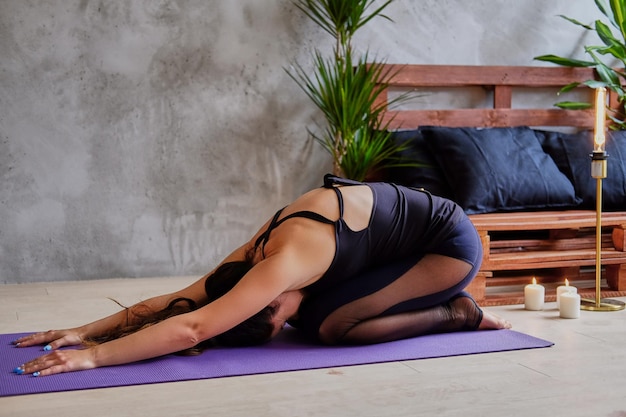
A yoga body isn’t just about flexible limbs. This ancient practice also boosts memory, heart health, and bone strength, according to Anna Magee.
In the UK, we’re really into yoga, spending £790 million annually on classes and mats. Though some yoga forms are becoming quite quirky—like rage or naked yoga, paddle-board yoga, and even dog yoga—the true benefits are increasingly validated by science.
Research from UCLA shows that a three-month yoga and meditation course is more effective than memory exercises in reducing age-related brain decline. It also improves sleep in breast cancer survivors.
When Lucy Edge, a former ad executive, faced severe depression, she chose yoga over prescribed anti-depressants. She took a six-month break, went to India to learn yoga, and returned feeling happier and content, despite not achieving a “yoga goddess” body. Lucy has written three books about yoga and started Yoga Meds, a resource of over 300 clinical trials on yoga’s benefits for conditions like arthritis, insomnia, and obesity.
Here are some ways yoga might benefit your health, and tips to get started:
Boosting Memory:
If puzzles and Sudoku are your go-to for memory training, consider adding yoga. UCLA’s study involving 25 adults over 55 showed that 12 weeks of yoga and meditation improved spatial and visual memory, reduced depression, and built better stress resilience than memory exercises.
To try it, you don’t need to do headstands. In the study, participants practiced Kundalini yoga once a week, along with 20 minutes of daily Kirtan Kriya meditation, involving chanting, hand movements, and visualizing light.
Heart Health:
While walking or jogging is often recommended for heart health, yoga can be equally beneficial. A 2014 review published in the European Journal of Preventative Cardiology found yoga might lower heart disease risk similarly to conventional exercise like brisk walking. Stress reduction through yoga helps lower blood pressure and heart rate, reducing the risk of blood clots.
To try it, you can start with gentle poses. Charlotte Watts, a yoga teacher and author, offers a stress-reducing yoga series in her book. Restorative yoga, as suggested by Anna Ashby, involves supported postures held for up to 12 minutes, giving your nervous system a break.
Reducing Back Pain:
Sarah Shone, a physiotherapist and yoga teacher, integrated yoga into a rehabilitation program for back pain, with 87% of participants reporting less pain. Yoga is also included in NICE guidelines for lower back pain. Shone is training more physiotherapists to use yoga in their practice. Additionally, yoga targets pelvic floor muscles, helping with incontinence, and being weight-bearing, it increases bone density.
To get started, inform your yoga teacher of any health issues and opt for gentler styles like Hatha or Iyengar before trying more vigorous forms. If you have back pain, consult your doctor about yoga as part of an exercise referral scheme.
Choosing the Right Gear:
When it comes to yoga mats, consider where you’ll keep it, how much you’ll carry it around, your height, and how much padding you need for joint comfort. Investing in a good-quality mat is worthwhile for a better practice experience.
For eco-conscious consumers, the Elephant Cork Yoga mat by Valka Yoga is a good option. Made from organic cork and natural rubber, it’s durable and eco-friendly, with a company promise to plant a tree for every purchase. It’s also antimicrobial and odor-resistant, perfect for those who sweat during practice.
A yoga block, like Valka Yoga’s matching cork block, can help with difficult poses by adding extra length and stability. This is useful whether you’re flexible or not.
Trying Different Styles:
For relaxation, try Yin or Restorative yoga classes, usually done with blankets and bolsters. For a more energetic workout, Vinyasa Flow links postures with breaths in a dance-like sequence. Beginners should not shy away as moves are adaptable. Iyengar yoga focuses on alignment and detail, using props and holding poses longer, making it great for beginners. Anusara yoga combines alignment with flow to upbeat music, and Yoga Therapy uses yoga to address injuries or illnesses.
These steps and choosing the right type of yoga can bring various health benefits, making yoga a valuable addition to your wellness routine.




